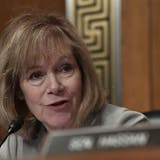John Roethlisberger spent years at the pinnacle of elite men's gymnastics, competing in three Olympics and six world championships. When he reflects on the whole of his athletic career, though, the former Gophers standout says he found greater fulfillment during his days in maroon and gold.
"I've told people many times, if I had to choose one over the other, I would choose my college experience," Roethlisberger said. "That's why this is so devastating."
NCAA men's gymnastics has been contracting for decades, a trend that accelerated sharply with the elimination of three more programs in the past month. The Gophers, Iowa and William & Mary all announced they would drop the sport at the end of the upcoming season. That slashes the number of NCAA programs to 12, with more cuts possible as schools deal with financial deficits caused by COVID-19.
Gophers coach Mike Burns said he will not stop fighting to save his sport, and others are lining up to help. The College Gymnastics Association, led by Burns, launched a fundraising campaign last week. Coaches are seeking ways to reduce their programs' expenses, including asking the NCAA to allow "virtual meets" in which each team competes in its own gym.
USA Gymnastics and the U.S. Olympic and Paralympic Committee (USOPC) are getting involved, too. On the men's side of the sport, college teams are the primary development ground for the Olympics and other international competitions.
"The urgency level is as high as it could get," said Jason Woodnick, vice president of the men's program at USA Gymnastics. "[College athletes] have been the core of our national team for years. Everybody is working to figure out what they can do."
If the sport is to survive, Burns said, its advocates must be willing to evolve and think creatively. A new model already has begun to take shape. GymACT — the Gymnastics Association of College Teams — is a group of self-funded teams loosely affiliated with colleges. While they are not NCAA programs, they compete at the same high level under the same rules.
The U's Board of Regents still must approve the elimination of men's gymnastics, men's track and field, and men's tennis. While Burns said the Gophers could find a way to exist outside the NCAA, he isn't willing to entertain that idea yet.


